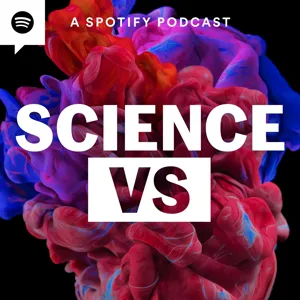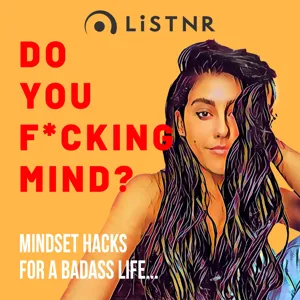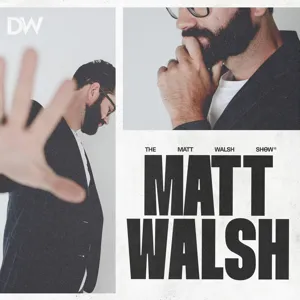Podcast Summary
Exploring Fear in the Gym and Criminal Psychology: Personalized support and expert coaching can make the gym less intimidating. In criminal psychology, understanding the motivations of serial killers can offer valuable insights.
The gym, often perceived as an intimidating place, can be made less frightening with personalized support and expert coaching, as offered by Anytime Fitness. Meanwhile, in the world of science, the podcast "Ologies" explores various fields of study in a fun and engaging way. In the realm of criminal psychology, serial killers like Ed Kemper, who embodies our fears, are a subject of fascination. Ed, who started killing at a young age, was released on parole in the late 1960s and went on to kill again. Criminal psychologist Eric Hickey sheds light on Ed's psyche and how it relates to serial killers in general. Despite their terrifying reputation, understanding the motivations behind their actions can provide valuable insights.
Understanding the Mind of a Serial Killer: Serial killers, like Ed Kemper, can hide their deadly intentions, and there have been around 500 in the US over the last 2 decades, mostly men, and they don't always follow bizarre rituals, but understanding their motivations is essential.
Serial killers, like Ed Kemper, can appear normal and charming while harboring a dark and deadly secret. Kemper, who murdered 10 people including his mother, was able to deceive those around him, even his psychiatrist, while carrying out his heinous acts. Research suggests that there have been around 500 serial killers in the US over the last 2 decades, and the majority of them are men. While popular culture often portrays serial killers as engaging in bizarre rituals alongside their murders, not all do. The FBI defines a serial killer as someone who kills at least two people in separate events. It's important to remember that serial killers are real and can be found in our communities, making understanding their motivations crucial.
Serial killers' behaviors extend beyond just killing: Studies show that while some serial killers dismember victims or scatter body parts for functional reasons, others exhibit 'signatures' that don't consistently occur and aren't reliable for identification.
Serial killers' behaviors extend beyond just killing, but the motivations behind these actions can be more functional than fantastical as portrayed in Hollywood. A study of 90 serial killers revealed that 40% dismembered their victims and 30% scattered body parts, often to help cover their tracks or dispose of the bodies. However, 70% of another study's sample of almost 40 serial killers exhibited behaviors that could not be easily explained as functional. These behaviors, such as carving patterns into victims or leaving them in bizarre poses, are often thought of as serial killer "signatures." However, research shows that these behaviors do not occur consistently and are not reliable indicators for identifying serial killers. Instead, personal relationships and tips from the community are the most common ways serial killers are caught. The portrayal of serial killers in media often oversimplifies their motivations and behaviors, but in reality, they are complex individuals who repeatedly engage in violent acts.
Serial killers' motivations: Sexual gratification revealed: Many serial killers are sexually motivated, as shown by cases like Larry Duane Hall's, but the origins of this behavior remain complex and debated.
Serial killers, who murder people repeatedly for their own pleasure, are driven by various motivations, including sexual gratification. During an interview, Eric Hickey, a criminology professor who has analyzed hundreds of serial killer cases and interviewed a dozen of them, shared an encounter with Larry Duane Hall, a suspected serial killer. Hall, who had sex with his victims after killing them, explained his actions to Eric, revealing a possible sexual motivation. While not all serial killers are sexually motivated, many are, and necrophilia, though rare, is not unheard of. Some kill for financial gain or political reasons, but the most common reason, according to two surveys, is the enjoyment they derive from it. The origins of this behavior remain a complex question, and theories range from biological predispositions to environmental factors. Regardless of the cause, the actions of serial killers are a haunting reminder of the depths of human depravity.
Serial killers are not intelligent masterminds: Most serial killers have average intelligence, contrary to the common trope of them being evil geniuses, and most blend in among us without psychiatric diagnoses
Serial killers are not the intelligent masterminds portrayed in Hollywood. According to a professor of psychiatry, Gwen Adsett, most serial killers have average intelligence, as evidenced by research on their IQ scores. The idea of serial killers as evil geniuses is a common trope, but it's not supported by the data. In reality, most serial killers blend in among us, and only a small percentage are diagnosed with psychiatric disorders before getting arrested. This challenges the popular belief that there are many deranged, manipulative, and calculating individuals planning to kill. Instead, the causes of serial killing remain a complex and ongoing area of research.
The link between serial killers and empathy is unclear: While some research suggests a correlation, other studies find no consistent evidence of empathy deficits in violent criminals. Childhood abuse may contribute, but it doesn't fully explain the complex motivations behind serial killing.
While it's commonly believed that serial killers lack empathy due to their violent actions, the scientific evidence is not clear-cut. Although some research suggests a link between violent criminals and empathy deficits, other studies have not found a consistent correlation. Moreover, a study on juvenile offenders revealed that exposure to violence in childhood, rather than a lack of empathy, is a more significant predictor of future violent behavior, including serial killing. This was true for infamous serial killer Ed Kemper, who grew up in an abusive household. However, it's essential to note that not all serial killers were abused as children. Therefore, while childhood abuse may be a contributing factor, it does not fully explain the complex motivations behind serial killing. Ultimately, the causes of serial killing remain a mystery, and more research is needed to fully understand this enigmatic phenomenon.
The Rarity of Serial Killers: Despite media portrayals, the likelihood of encountering a serial killer is extremely low, and they don't always follow a specific pattern or possess exceptional intelligence.
Serial killers are statistically rare, with approximately 50 serial killers in the US each year, equating to one for every 600,000 Americans. Despite their prevalence in media and fear-inducing stereotypes, the likelihood of encountering a serial killer is extremely low. Contrary to popular belief, serial killers don't always follow a specific ritual or pattern, and many are driven by sexual desires. Additionally, most serial killers do not possess exceptional intelligence. The fear of serial killers might be exaggerated due to their portrayal in media, while the real danger lies in more common threats, such as current or former partners. Overall, understanding the reality of serial killers can help alleviate unnecessary fears and provide a more accurate perspective.
Exploring the physical characteristics of potential alien species: The podcast team has discussed circumcisions for over a thousand potential alien species, showcasing their extensive investigations into extraterrestrial life.
Wendy Zuckerman's podcast has facilitated the exploration of various intriguing topics, including the possibility of encountering extraterrestrial life. During the conversation, they touched upon the idea that if such beings existed, they might have unique physical characteristics, leading Wendy to estimate that she and her team have discussed circumcisions for over a thousand potential alien species. This is a testament to the depth and breadth of their investigations. To help more people discover their podcast, they kindly ask listeners to share it with their friends and leave positive reviews on iTunes.





